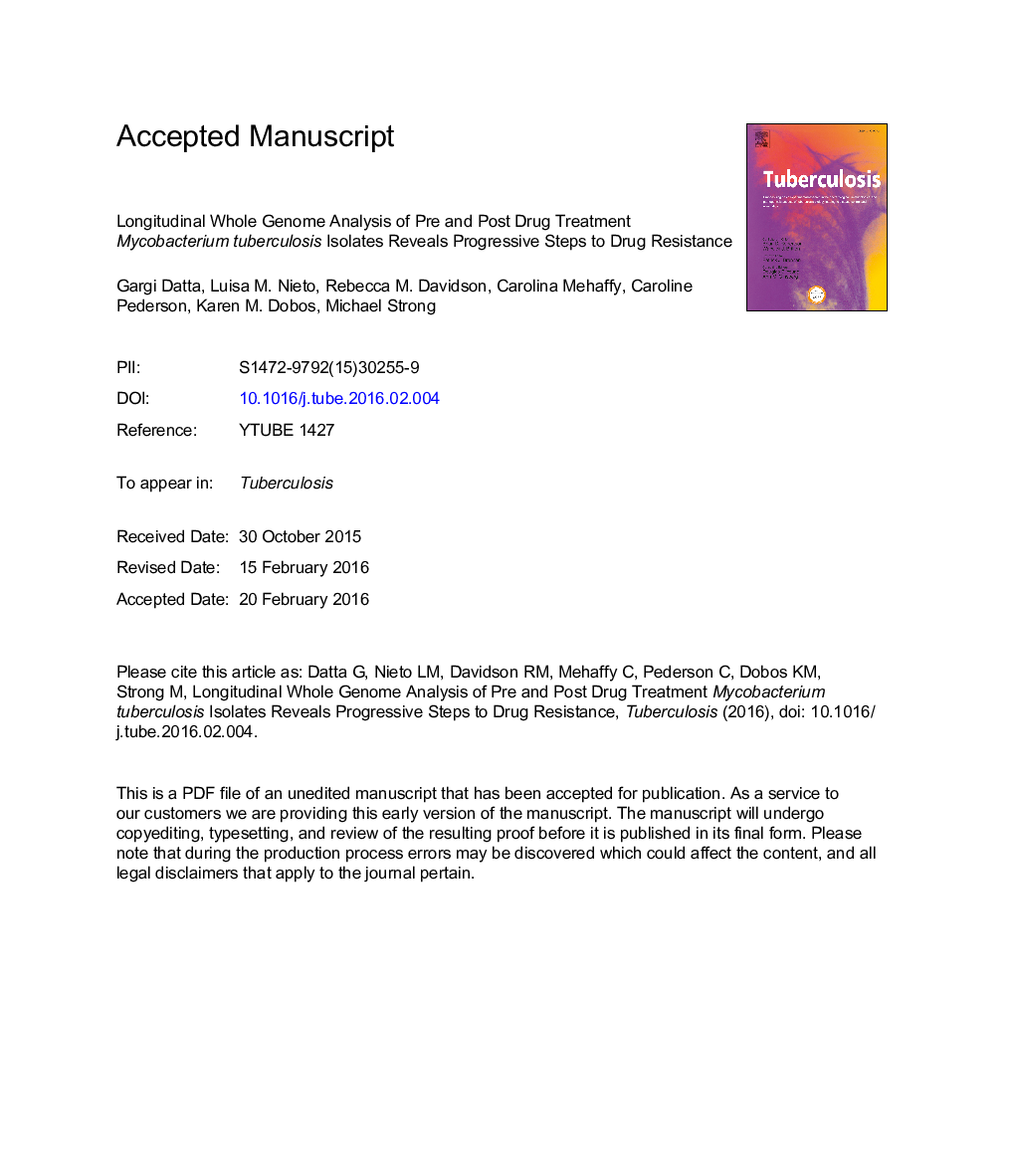| Article ID | Journal | Published Year | Pages | File Type |
|---|---|---|---|---|
| 8485295 | Tuberculosis | 2016 | 24 Pages |
Abstract
Tuberculosis (TB) is one of the leading causes of death due to an infectious disease in the world. Understanding the mechanisms of drug resistance has become pivotal in the detection and treatment of newly emerging resistant TB cases. We have analyzed three pairs of Mycobacterium tuberculosis strains pre- and post-drug treatment to identify mutations involved in the progression of resistance to the drugs rifampicin and isoniazid. In the rifampicin resistant strain, we confirmed a mutation in rpoB (S450L) that is known to confer resistance to rifampicin. We discovered a novel L101R mutation in the katG gene of an isoniazid resistant strain, which may directly contribute to isoniazid resistance due to the proximity of the mutation to the katG isoniazid-activating site. Another isoniazid resistant strain had a rare mutation in the start codon of katG. We also identified a number of mutations in each longitudinal pair, such as toxin-antitoxin mutations that may influence the progression towards resistance or may play a role in compensatory fitness. These findings improve our knowledge of drug resistance progression during therapy and provide a methodology to monitor longitudinal strains using whole genome sequencing, polymorphism comparison, and functional annotation.
Keywords
Related Topics
Life Sciences
Immunology and Microbiology
Applied Microbiology and Biotechnology
Authors
Gargi Datta, Luisa M. Nieto, Rebecca M. Davidson, Carolina Mehaffy, Caroline Pederson, Karen M. Dobos, Michael Strong,
